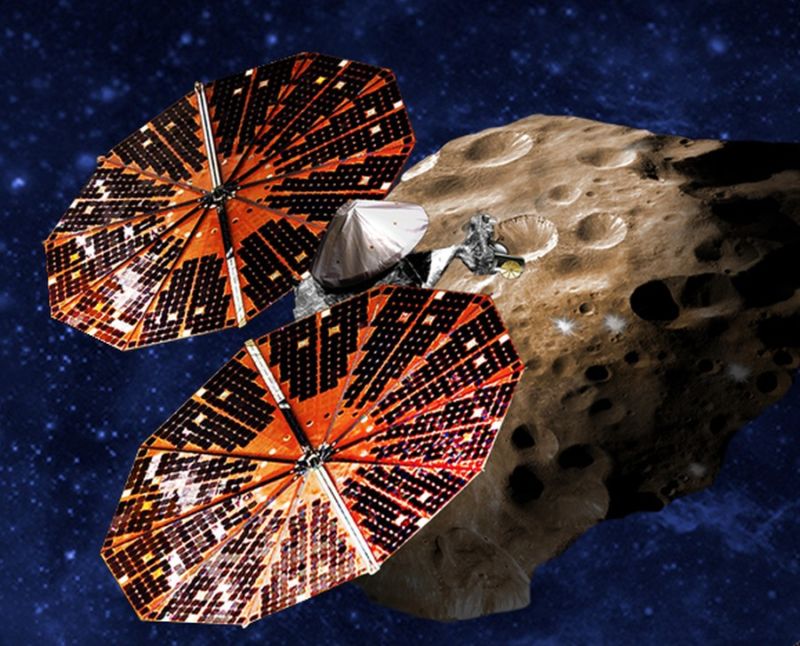A little more than two years have passed since the Lucy mission launched on an Atlas V rocket, ultimately bound for asteroids that share an orbit with Jupiter. After a gravity assist from Earth in 2022, the spacecraft has been making a beeline for an intermediate target, and now it is nearly there.
On Wednesday, the $1 billion mission is due to make its first asteroid flyby, coming to within 265 miles (425 km) of the small main belt asteroid Dinkinesh. In a blog post, NASA says the encounter will take place at 12:54 pm ET (16:54 UTC).
About an hour before the encounter, the spacecraft will begin attempting to lock on to the small asteroid so that its instruments are oriented toward it. This will allow for the best possible position to take data from Dinkinesh as Lucy speeds by at 10,000 mph (4,470 meters per second).
During this maneuver, Lucy's main antenna will be pointed away from Earth, so it will not be in communication with its operators at Goddard Space Flight Center in Greenbelt, Maryland. After the flyby, Lucy will reorient itself to reestablish communications with Earth through the Deep Space Network. Imagery and other data will be relayed back to Earth for several subsequent days.
What’s in a name?
This is an important flyby for Lucy for several reasons. First of all, it's the first real test of the spacecraft's tracking system. If this fails, the asteroid will be little more than a blur as Lucy zips by.
Symbolically, the asteroid flyby is also significant. Lucy, the spacecraft, is named after the Lucy hominin fossils found in 1974 in Ethiopia. These fossils of the Australopithecus afarensis species are critical to our understanding of human evolution and helped scientists determine that our ability to walk on two legs preceded the increase in brain size that is one of the dominant characteristics of modern humans.
The NASA mission will study "Trojan" asteroids that share the same orbit as Jupiter. Scientists believe these asteroids are remnants of the era of planet formation in the Solar System and are therefore akin to fossils. Hence, the name Lucy for this mission.
Dinkinesh, which is nearly a kilometer across at its widest point, was discovered in 1999. It was unnamed when the Lucy mission targeted it for its first flyby as a test of the tracking system, en route to the Jovian trojan asteroids later this decade. So, Lucy mission scientists proposed the name Dinkinesh, the Ethiopian name for the Lucy fossils.
It was approved earlier this year by the International Astronomical Union.



3175x175(CURRENT).thumb.jpg.b05acc060982b36f5891ba728e6d953c.jpg)

Recommended Comments
There are no comments to display.
Join the conversation
You can post now and register later. If you have an account, sign in now to post with your account.
Note: Your post will require moderator approval before it will be visible.